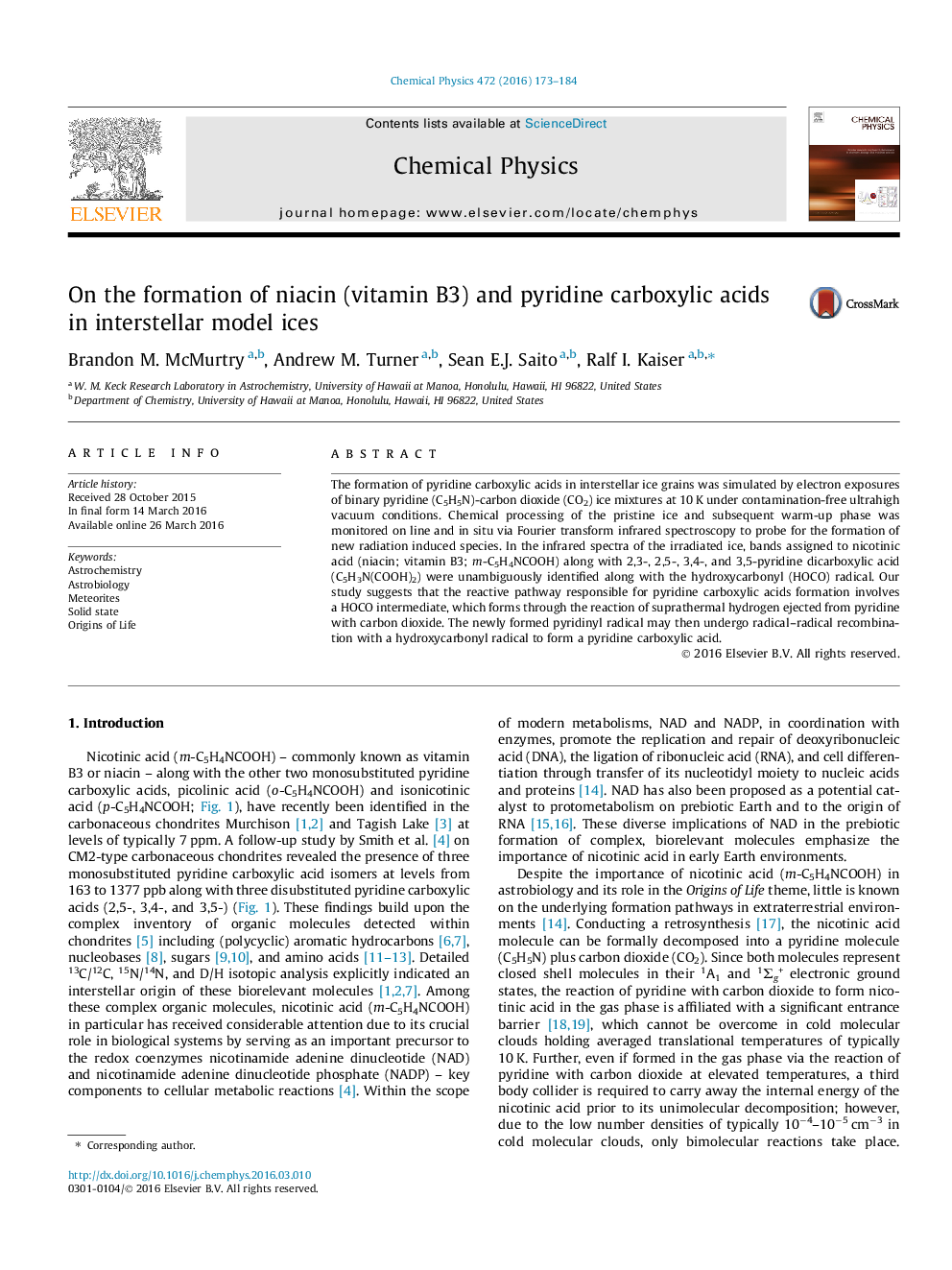| Article ID | Journal | Published Year | Pages | File Type |
|---|---|---|---|---|
| 5373005 | Chemical Physics | 2016 | 12 Pages |
Abstract
The formation of pyridine carboxylic acids in interstellar ice grains was simulated by electron exposures of binary pyridine (C5H5N)-carbon dioxide (CO2) ice mixtures at 10Â K under contamination-free ultrahigh vacuum conditions. Chemical processing of the pristine ice and subsequent warm-up phase was monitored on line and in situ via Fourier transform infrared spectroscopy to probe for the formation of new radiation induced species. In the infrared spectra of the irradiated ice, bands assigned to nicotinic acid (niacin; vitamin B3; m-C5H4NCOOH) along with 2,3-, 2,5-, 3,4-, and 3,5-pyridine dicarboxylic acid (C5H3N(COOH)2) were unambiguously identified along with the hydroxycarbonyl (HOCO) radical. Our study suggests that the reactive pathway responsible for pyridine carboxylic acids formation involves a HOCO intermediate, which forms through the reaction of suprathermal hydrogen ejected from pyridine with carbon dioxide. The newly formed pyridinyl radical may then undergo radical-radical recombination with a hydroxycarbonyl radical to form a pyridine carboxylic acid.
Related Topics
Physical Sciences and Engineering
Chemistry
Physical and Theoretical Chemistry
Authors
Brandon M. McMurtry, Andrew M. Turner, Sean E.J. Saito, Ralf I. Kaiser,
